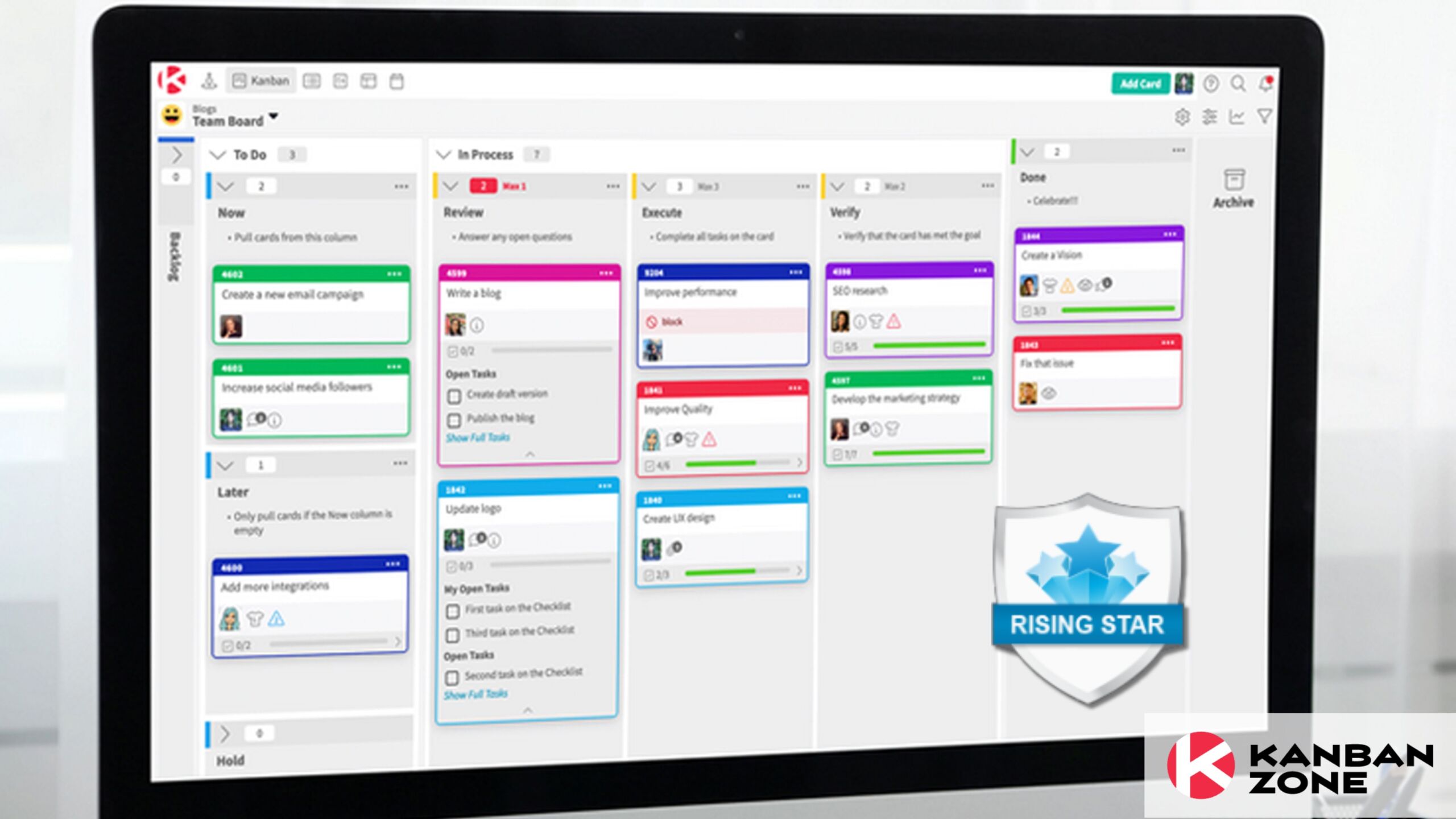
Have you ever faced problems in your business which were related to lack of clarity or communication? If the answer is yes, then maybe you should consider implementing visual management in your day-to-day activities.
Visual management can help you establish good communication across your business, which leads to higher engagement of team workers and a comprehensive analysis of business data, thus favoring effective actions and minimizing problems.
In this article, we take a look at what visual management is, the main goals behind visual management, some examples that are applied in praxis and how the Kanban method can support visual management in a business environment.
What is Visual Management?
As its own name suggests, visual management can be understood as a business strategy used to clearly show the performance, expectations, problems and the standards that are currently employed during daily activities in a business. Put simply, visual management consists in adopting the principle of transparency during business management.
Therefore, in a transparent work environment, the workflow must be comprehended and visible from process beginning until the end. In other words, visual management exists when basically all the team workers involved can understand what is happening in the process in a fast way and the information available concerning the process is self-explanatory.
Despite having huge applications in the manufacturing industry through the Lean Manufacturing methodology, visual management can also be used in many different types of business environments.
Goals of Visual Management
Among the main goals of visual management, some important ones can be listed, as for example:
- Fast status information. Team members must be allowed to get reliable and fast information about the current situation of the process, which in turn enables existing problems and waste to be recognized in real-time and actions are taken in order to increase process efficiency.
- Standardization. Team members are influenced to maintain correct working procedures when visual management is correctly used which helps achieving process standardization.
- Easy understanding. The performance and understanding of routine tasks can be improved when using visual management. This is due to the possibility of reducing the time associated with non-value-added activities and different types of waste that may exist in the process.
Visual Management Examples
There are different alternatives that are commonly employed for visual management. Below, some examples are shown:
Analytic Dashboards
Analytic dashboards are made up of different types of graphs and charts that show how businesses KPIs (key process indicators) perform over time. By making results more visual, analytic dashboards are a great way to adopt visual management as they facilitate the understanding of KPIs related to the business process. Additionally, these dashboards help save time as information is gathered in one place at a glance, which increases productivity and assists the internal communication of the entire team.
Information Boards
Information boards are one of the most conventional forms of visual management. In the field of manufacturing, information boards are commonly found on shop-floor showing, for example, the machine status, procedures for solving recurrent problems and daily metrics available for all team members.
Information boards can also be used for tracking the project status in the field of agile project management. These types of boards allow project teams to visualize work-related tasks, giving all stakeholders an overview of both short-term and long-term goals of the current project.
Another form of visual management board that has been used extensively both in industry as well as in other business segments is the 5S control board. This type of board is a visible manner to control and sustain the 5S process, by breaking the process down into its five stages. Additionally, the board allows teams to verify the completion of tasks as well as to have a look on who is taking action on different tasks as needed.
Visual Management Boards Using Kanban
The Kanban method is a powerful tool in order to implement visual management boards in a business. This is possible based on two important properties of the Kanban method which are:
1. Visualize process workflow
This is done by creating cards that are visual on a digital Kanban board, where the cards are associated with specific tasks that need to be accomplished by the team. Process stages are represented by the columns of the Kanban board and workflow can be visualized.
2. Measure and manage the flow
Aiming at continuously improving any business process, it is important to measure the performance of the process under consideration. This is normally done by evaluating important metrics that are possible to be measured with the Kanban method, such as, cycle time, throughput and many others. Cycle time shows the responsiveness of the working team whereas the metric throughput reflects how the team is performing over time.
By measuring metrics, the work team can recognize how the process is running at any time so that unexpected changes can be corrected. Additionally, by managing and measuring the workflow constantly, the team can realize if changes made in the process were positive or negative and then adjust as a team.
Learn to Work Smarter, Not Harder!
Get our top articles weekly.
Table Of Contents
Discover many more posts…







